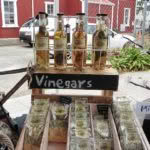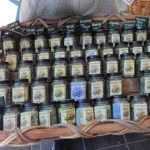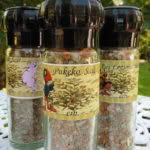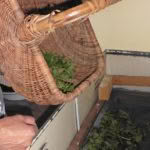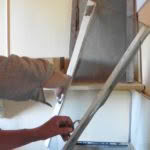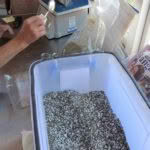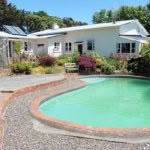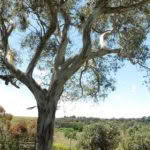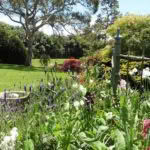Cathy Dickison’s thriving Erb business
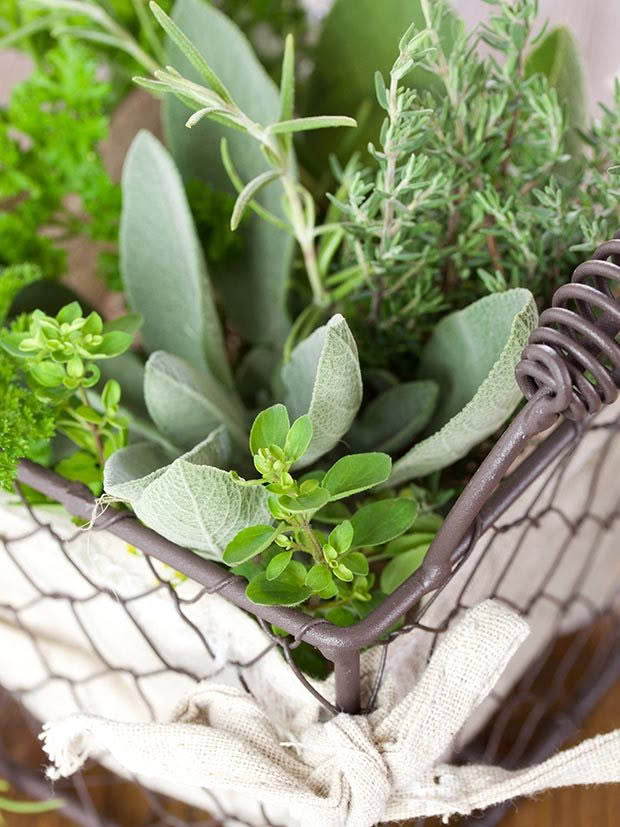
The last thing Cathy Dickison thought she would be doing is turning her gardening skills into a dried herb business.
Words and Photos: Helen Frances
Cathy Dickison is quick to confess she’s never been a foodie. But when her body started grumbling about hard physical effort a few years ago, she knew she needed to change direction.
These days there are creative food ideas popping out of her head all the time, thanks to her thriving herb garden and her business, called Erb.
It’s a big change from her old working life tending plants in other people’s gardens, pruning roses, and raising Friesian bulls and three children.
- Stall at the River Traders Market in Whanganui.
- “The ideas are endless, what you can do with flavours.”
- Cathy added orange zest to her salt rubs to go with gamey meats, seafood and vegetables.
- All the herbs are grown spray-free.
- Cathy has come up with some ingenious solutions such as converting an old-fashioned cabinet clothes dryer to dry herbs.
- Cathy has come up with some ingenious solutions such as converting an old-fashioned cabinet clothes dryer to dry herbs.
- Hand-made and home -made Erb products.
- Cathy is converting a large stand up dryer, to allow her to dry more herbs at once.
- Cathy’s December home market allows people to wander her extensive garden, buy her products and have a chat over a cuppa.
- Cathy’s block was cut off when the farm was sold a few years ago.
- There is always something new to learn for this long time herb gardener.
- Cathy holds a home market day in December where people can wander around her garden.
- There are well established plants on her land.
“My body was complaining as I got older, and I was a bit driven but you’ve got to pay the bills. Then I was stopped by foot and hip operations. I’ve been on a journey trying to do all this and admitting I need a random bit of help along the way. Wwoofers are good – I borrow other people’s – and my community networks are really supportive.”
Becoming a commercial herb grower and food producer wasn’t what she saw herself doing, but she has turned it into a thriving business.
“The ideas are endless, what you can do with flavours. I like eating things other people have made, but here I am doing it.”
Cathy sells her fresh herbs and a range of salt and dried herb mixes at the River Traders Market in Whanganui, and takes online orders. She holds a home market day in December where people can wander around her extensive garden, have a chat over a cuppa, and buy her products and those of other stallholders.
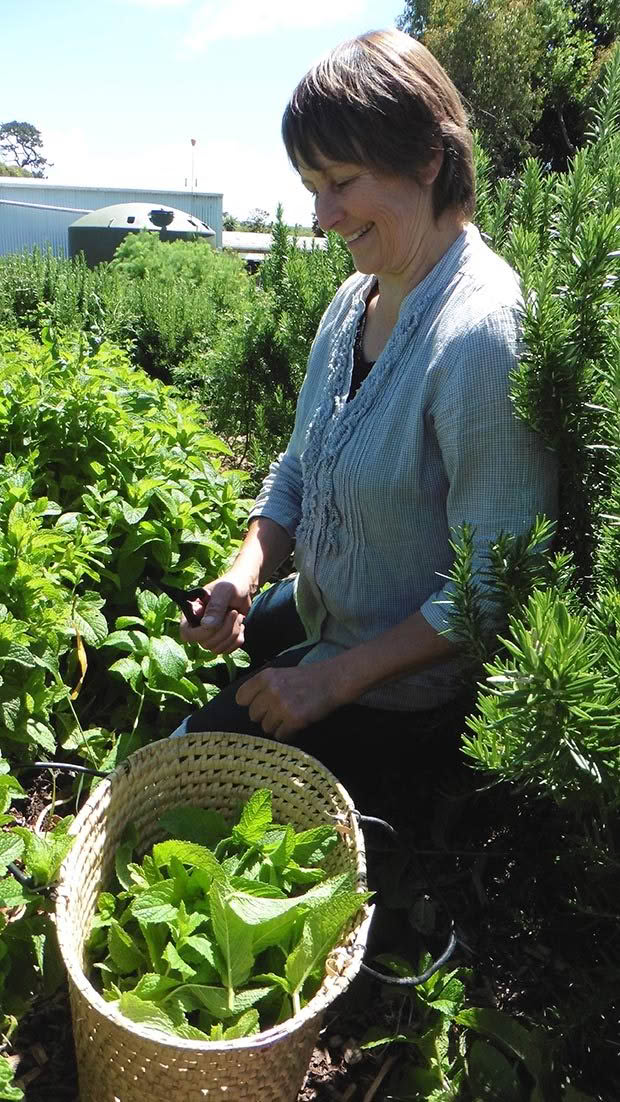
Cathy harvests and makes all her product by hand.
In the last three years she’s come up with over 20 flavoured salt rubs using different herb combinations to suit various meats and vegetables. Her most popular is a steak rub of sage, thyme, rosemary, chilli and garlic. One of the more unusual is an egg-salt idea hatched out of her daughter’s love of rosemary and thyme on her eggs.
“I went one step further and invented egg salt with parsley and pepper in it as well. You’ve got to have pepper on your eggs don’t you? It’s doing well because it’s nice on veges and whatever really. There are endless opportunities with rosemary and thyme.”
There’s always something new to learn for this long-time herb gardener. She found a fennel, tarragon and parsley rub she created a bit tasteless until she put it on snapper.
“I couldn’t taste the herbs at all but the flavour of the fish was absolutely beautiful so the herbs must change the flavour of the fish as well as themselves.”
Cathy’s tip: add the rub to breadcrumbs, then coat the fish.
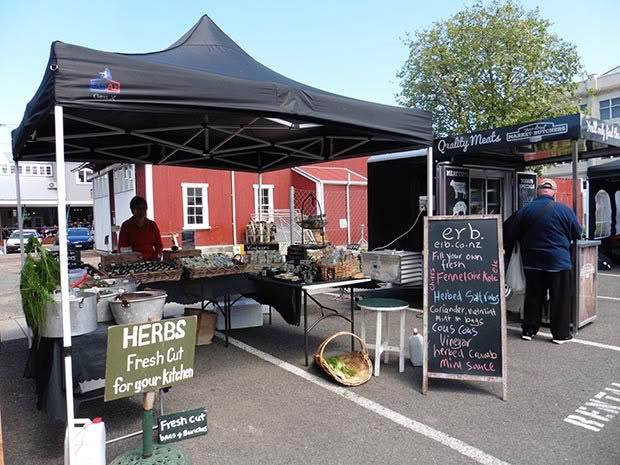
Local Whanganui market.
Last Christmas another idea popped up. She added dried orange zest to some of the herb and salt products to go with gamey meats, seafood and vegetables.
She gave them names and humorous, eye-catching labels such as Possum, Pukeko (to go with game meats), Eel (fennel-based), Shrimp, and Les Legumes (French for vegetables) which includes lemongrass, coriander and Vietnamese mint.
She also makes herb-infused vinegars, breadcrumb mixtures and herbal mixes for people who don’t use salt.
Cathy’s cottage industry has grown steadily and she wants to keep it that way, making everything by hand even though it is labour-intensive. She has come up with some ingenious solutions such as converting an old-fashioned cabinet clothes dryer to dry the herbs. She layers the herbs on wire mesh trays and stacks them one top of the other.
When the herbs are dry – it takes about eight hours – she rubs them through a sieve. For tougher herbs like rosemary, she uses a blender, taking care to remove any twigs. She then measures the quantities, combines them with Dominion rock salt and packages them up. The labels are printed by a lady at church, her mother lends a hand sticking them onto the containers, and Cathy’s home-made products are ready for market.
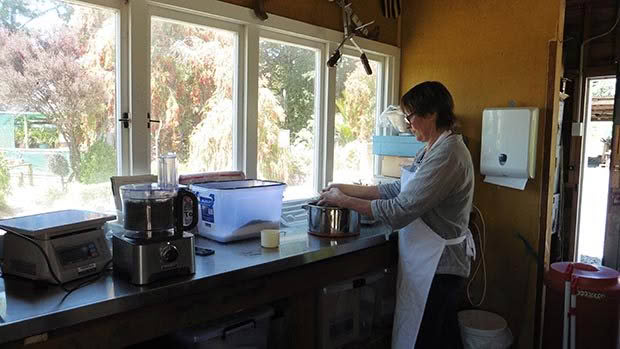
Cathy grows all her herbs spray free.
Her block used to be part of a 200ha (500 acre) that was in her family for five generations. When the majority of the land was sold, Cathy bought the homestead and enough land to make
a small business work.
“People said ‘why don’t you grow plants?’ I knew I could grow something on the land but I didn’t want rows of pots or a plant nursery. I knew I wanted to work from home, it’s such an awesome environment here.”
A couple of operations on one of her feet and a hip replacement meant she had to take considerable time off work. That was the impetus for Cathy to reinvent herself and create Erb.
She already had a solid background in plant midwifery, working for a year in a rose nursery when she left school, then gaining a Diploma in Horticulture at Massey University.
On her OE she did private gardening in England, working in small back yards and in a garden centre.
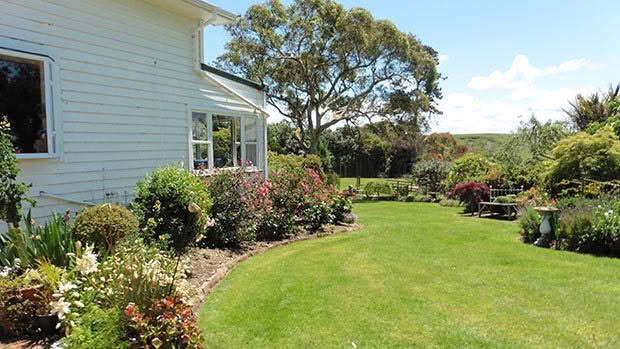
Cathy’s home is her family’s original farmhouse.
Back in New Zealand she drew up garden plans for casual clients, did garden maintenance, and pruned roses for 30 years, all while bringing up three children and raising bulls. She hasn’t quite let go of that. The farmer next door lets her use a shed where she raises around 250 calves every year.
As she shows you around the garden, Cathy does some weeding and plants sage seedlings. She has a stylish way of tossing the weeds over one shoulder and offering you a bunch of wayward mint with the other. The earth is full of worms.
There are well-established plants here too: orchids, roses, camellias and rhododendrons planted by her grandmother, tamarillos, babaco, artichokes, tomatoes, irises in full bloom, succulents growing in a ball. There are bantams in an aviary, and wooden bird boxes hanging on a fence that Cathy used to make and sell a few years ago.
A shed that used to be an office will soon be up-and-running as a drying room. Cathy is converting a large stand-up dryer which will allow her to dry more herbs at once.
This is Cathy’s first venture into business and she’s found she can’t stop coming up with new ideas. When tenants vacated a self-contained double bedroom flat, part of which used to be her grandmother’s childhood schoolroom, Cathy thought she would give a bed and breakfast a go.
Her newly-opened B&B is already proving popular.
“Business-minded people must think I’m mad. But I’m getting more excited now – I feel I’m on the cusp of something.”
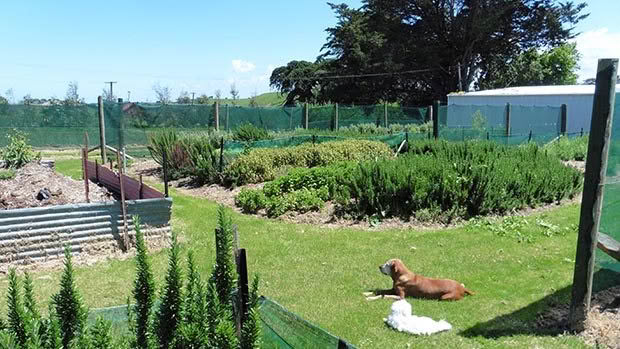
Cathy’s dogs enjoy the sun, but are ever vigilant fro rabbits.
IN THE HERB GARDEN
Cathy grows her basic herb range in gardens about the size of three tennis courts. It includes parsley, sage, rosemary, thyme, Italian parsley, garlic chives, standard chives, Vietnamese mint, normal and chocolate mint, fennel, rocket, basil, coriander, a bit of comfrey, tarragon, dill and lemon grass.
The herbs are spray-free. She uses diatomaceous earth (fossilised fresh water algae deposits) which she says acts as an organic insecticide, completely natural and certified organic. She has also built a rabbit-proof fence, recycling her father’s tennis court fence and covering it with shade cloth as a windbreak.
“The prevailing westerly is quite windy. I could shoot the rabbits but it’s a time thing really. You’ve got to sit out there and wait for them.”
Going by the grey fur she discovers on the living room floor, her dogs are also good rabbiters.
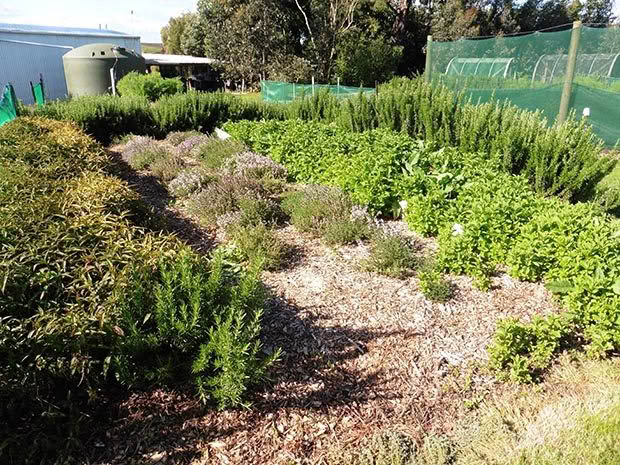
The accountant wanted to know how much each square metre produced.
The soil is good, a rich layer of topsoil over wet Okoia clay, with an iron-pan underneath. She has built up all the beds, then rows within the beds, to let the water run off. She has also implemented a new mulching system she learned from Back to Eden, an organic gardening film.
“(The presenter) went into the forest one day and realised you don’t need to dig the soil up. He noticed how it rots; there’s a layer of leaves and sticks so he emulated that. You put a layer of compost about 2-3 inches thick on the ground and on top of that a thicker layer of arborous mulch. All I need to do is tweak what I’ve been doing. The mulch system is good because my soil is quite clay-ey and I’ve been putting gypsum on it. I’d bought a rotary hoe but now I’ll be selling it and loading compost onto the garden from my calf shed (she gets 90 cubic metres every year). However, herbs don’t have high fertiliser requirements.”
In the beginning she says she overplanted, but now she can see scope for future growth.
“We planted in winter and the herbs looked great in spring so we started supplying fresh herbs to local restaurants. It was a good way to start. The accountant wanted to know how much each square metre produced.”
She still sells fresh herbs, but mainly concentrates on her dried products.

THE CAMERON’S BLOCKHOUSE
The homestead Cathy lives in dates from 1882, but there is another earlier Heritage New Zealand Category 1 listed building on the land nearby which the public can visit.
The Cameron Blockhouse was built in 1868 by farmer John Cameron as a place of refuge for his family. However, it wasn’t needed as battles between the army of European settlers and Maori never reached the area.
The blockhouse has a floor of compacted earth, double-skinned tōtara walls with clay infill (to protect against bullets and fire) and a corrugated iron roof. Around the walls holes for gun barrels let in shafts of light.
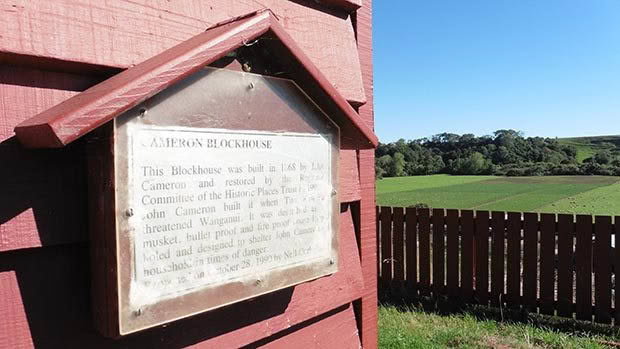
Love this story? Subscribe now!
 This article first appeared in NZ Lifestyle Block Magazine.
This article first appeared in NZ Lifestyle Block Magazine.
